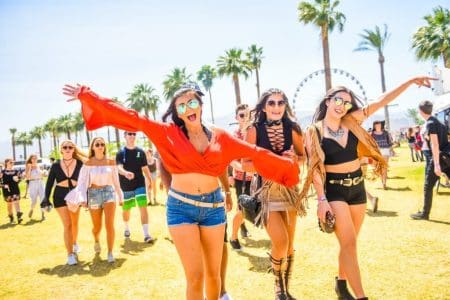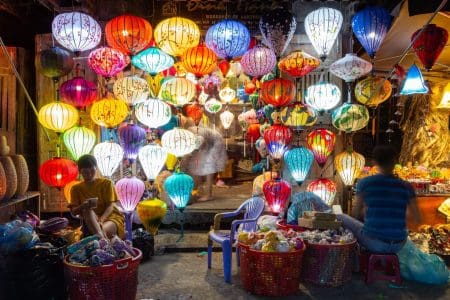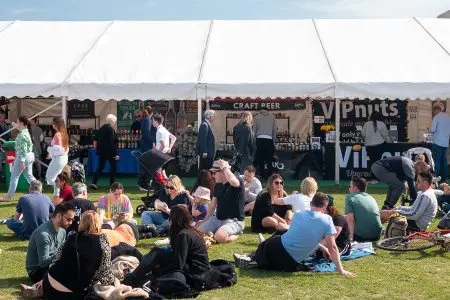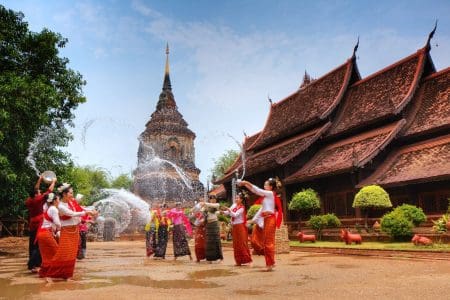
- This event has passed.
At first sight this seems like a joyous celebration of one of Christianity’s most important figures, but, no, it is way more than that. The Fiesta de San Juan Bautista is a celebration of being Afro-Venezuelan, of African culture, of overcoming the pain of chattel slavery. It is celebrated with mesmerising drum (tambores) music and streets filled with vibrant dancing.
History of Fiesta de San Juan Bautista (Festival of Saint John the Baptist)
Saint John the Baptist is seen as a prophet by Christianity, Islam, the Baha’i and the Druze. In Christianity, he is the saint who baptised Jesus and recognised him as the son of God. His birthday is celebrated on 24 June. Later, he criticised King Herod for divorcing his wife and marrying Herodias, the wife of his brother, which was against the law of the time. A furious Herodias then tricked Herod into executing John the Baptist, whose head was presented to court on a platter.
There is definitely a Christian element to the Fiesta de San Juan Bautista in Venezuela, but its full history is much more interesting.
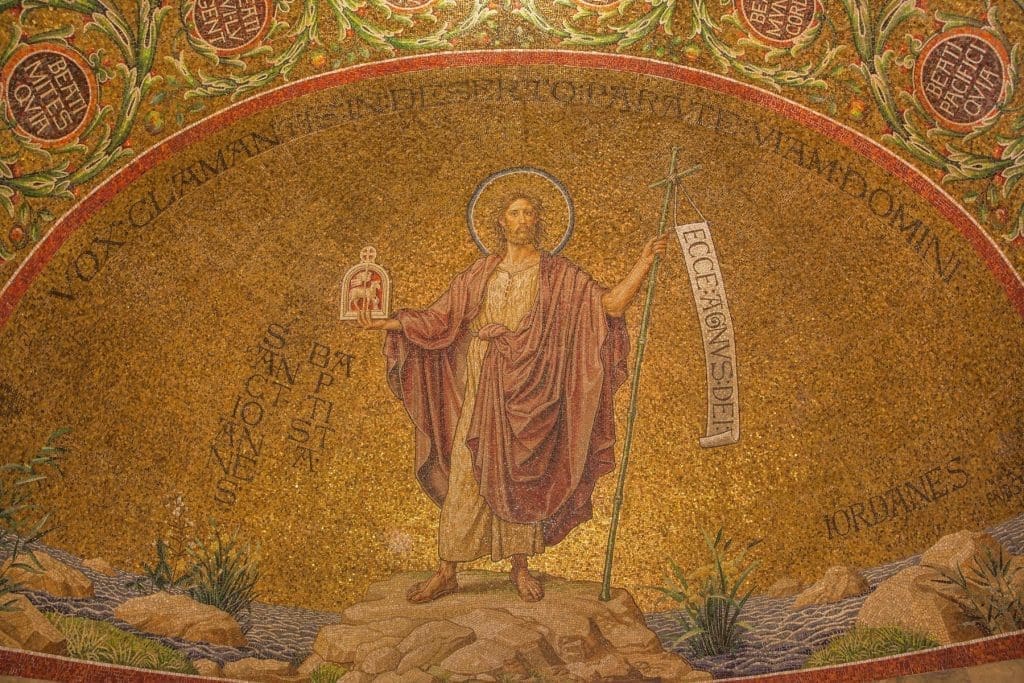
In the 18th century, plantation slaves had very few holidays a year, one was the 24 June, and slaves were not allowed into church. The Catholic hierarchy gave the slaves permission to celebrate El Día de San Juan Bautista, but the slaves used the event to celebrate the figure of San Juan Congo (Saint John Congo), who was said to be an enslaved African prince who had been brought to Venezuela. He may be real, or legendary, but is certainly a symbol for everything Afro-Venezuelans were and are commemorating. Therefore, whilst the white elite saw their saint being worshipped, actually beneath it all was a celebration of Africa and resistance.
24 June is a national holiday in Venezuela for another very important reason. On this day, Simon Bolivar destroyed the Spanish army in Venezuela at the Battle of Carabobo. His forces included volunteers from the British, Irish and German Legion who played a decisive part in the fighting.
When is El Día de San Juan Bautista in Venezuela?
There are local variations, but it is definitely on Monday 24 June 2024. In many places it starts on Sunday 23 with a visit to homes of family and friends, or to worship in church. It often continues on into Tuesday 25.
In some towns and villages, there are six hours of drumming from midday on 1 June.
What to Expect on El Día de San Juan Bautista (Saint John the Baptist’s Day)
Saint John’s colours are red for the blood of his martyrdom as well as for happiness, and white for purity. The streets are often decorated in this way and fishing boats too, if you are on the coast. The festival varies a little in each place that it is celebrated.
In the village of Curiepe in Miranda State, at around midday on the 23 June, drums announce the coming celebrations. The following morning a procession leaves the white and green House of Culture, carrying the statue of Saint John. This building is where the saint resides all year. The statue may be in the form of a child or a man; in Curiepe it is a boy. At 10 am the procession enters the church and mass begins, lasting until midday. At the sound of twelve bells, the saint re-emerges with the procession and moves into the streets.
A vital part of the procession is the drummers, whose rhythm and passion has a huge influence on the dancing, as the group moves on. The procession pauses periodically, perhaps at a junction, or in front of an important building. At the stops, the intensity of the drumming changes. The crowds, or sanjuaneros, transition from watching, or following, to dancing or vice versa.
The music is both infectious and hypnotic, the energy level rises. Fireworks erupt, flower petals and rice are thrown in the air. It’s a great time to try Venezuelan rum, some of the best in the world. The dancing is often in the form of couples circling each other then circling back. It is vibrant, it is sensual. Tradition has it that the slaves used to only use the sole of one foot because the leg irons hampered their movements.
A drum is a drum is a drum, you may say, but in Venezuelan tambores there are different beats and different types of drums. Many are made from bamboo, but others, such as the culo e’puya are made from long hollowed out trunks and played by more than one person, thus creating different rhythms at the same time.
The procession continues through the night and at around daybreak on the 25 June, San Juan is returned to the House of Culture. After all that night-time action, there is some needed rest time.
The celebration takes off again at 2pm when the procession heads to the church once more, making regular stops to drum. At around 6pm, a crowd assembles to stop the saint entering; the procession tries to go in, the crowd push back. It’s all good natured, of course, and by now, there have been around 30 hours since the partying began. Sure, people do slip away, take a break and come back again. Eventually, the procession push through to the church, the saint is returned and the festival comes to its exhausted end.
This can vary from place to place, but it will be a great experience wherever you go.
When is El Día de San Juan Bautista (Saint John the Baptist’s Day)?
Monday 24 June 2024.
Where is Fiesta de San Juan Bautista (Saint John the Baptist’s Festival)?
This festival is celebrated in towns and villages with a strong Afro-Venezuelan heritage. These places include: Rio Chico, Barlovento and Curiepe in Miranda; Ocumare de la Costa and Cata in Aragua; Naiguatá in Vargas; San Juan de Los Morros in Guárico; and parts of Carabobo and Yaracuy States.
Things to Do in Venezuela
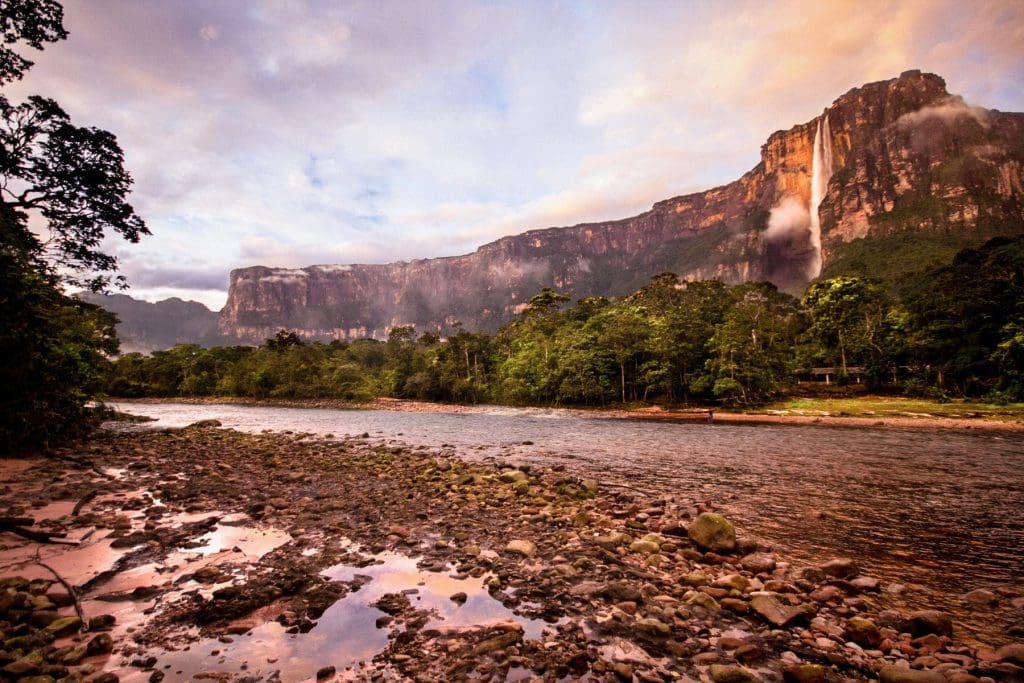
Venezuela has continuing economic, political and social problems, but the country has amazing possibilities for tourism. The industry largely survives on internal travellers for the moment.
To give a taste of what you might miss, Venezuela has a huge variety of climatic zones and holds three incredible world records. Firstly, Angel Falls is the highest waterfall in the world, Merida has the longest cable car that goes up into the snows of the high Andes, and, mightiest of all, it hosts the biggest natural thunder and lightning display at Catatumbo. Let’s add to that many fantastic beaches, such as in isles of Los Roques, and the tepuys of Roraima ‘The Lost World’.
Flights to Venezuela
There are no direct flights from London to Caracas, but it is possible to fly with TAP via Lisbon, Iberia via Madrid or Turkish via Istanbul.
From the US, Copa flies out of Boston, Chicago O’Hare, Denver, Fort Lauderdale, Las Vegas, Los Angeles, Miami, New York JFK, New Orleans, Orlando, San Francisco, Tampa and Washington Dulles, with a change of plane in Panama City and then on to Caracas.
There is a bus network, but it may be better to hire a car and driver to take you where you want to go, though this is a much more expensive option.
Accommodation during El Día de San Juan Bautista (Saint John the Baptist’s Day)
Many of the places that celebrate El Día de San Juan Bautista are small towns or villages, so you will likely need to stay nearby and commute to and from the festival.
To find the best accommodation in the places you visit, as well as international flights, please search via our comparison engine, which scans all the major booking sites so you don’t have to.
More Information on Venezuela
The official Venezuelan Ministry of Tourism website, Mintur, has some information in English on what to do in the country and some great photographs, but little on this festival. Visit http://www.venetur.com/index.php/revista-english/.
Main photo photo courtesy of Geinos and Gisbranys Chirinos.
